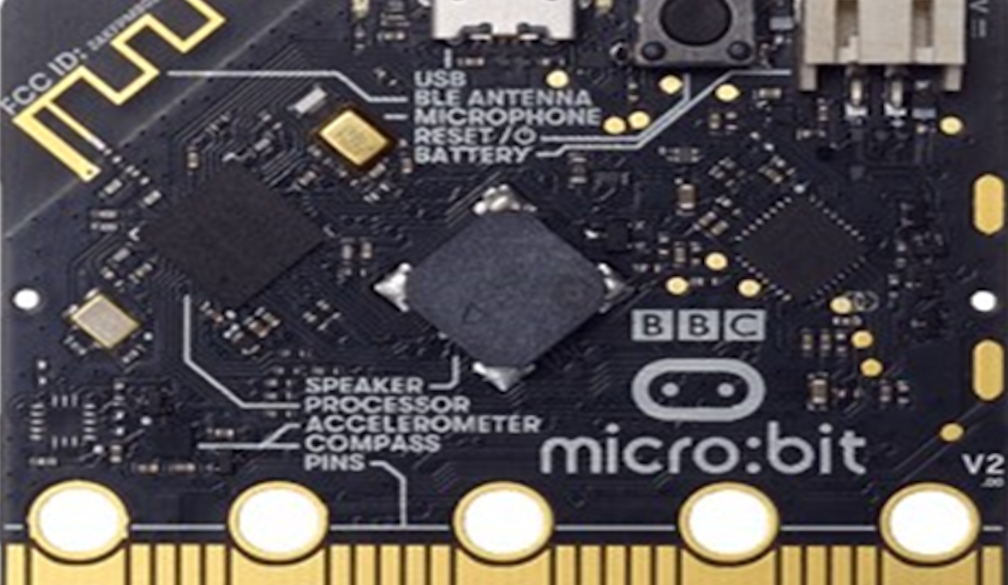Empowering Young Minds: A Guide to the Versatile BBC Microbit

The BBC Microbit is a compact, pocket-sized microcontroller transforming how young people learn programming. Designed for novices, it provides an accessible environment for youngsters to learn about and experiment with programming principles. It fosters creativity and problem-solving abilities via interactive projects and activities.
Kids can program LEDs, buttons, and sensors and link the Microbit to other devices such as cellphones and laptops. This gives up new opportunities for game development, animation, and creation. The Microbit is more than a toy; it is an educational tool that teaches young minds to think critically, solve issues rationally, and express creativity via coding.
This part will examine the BBC Microbit's features and uses in children's programming and STEM education. We will learn how this unique technology unlocks young brains' potential by fostering creativity and problem-solving skills.
The BBC Microbit's Features and Capabilities
The BBC Micro bit is a sophisticated microcontroller board that has grown in popularity as an effective learning tool. Its customisable technology and many capabilities make it an excellent option for instructors and students.
One of the Microbit's distinguishing characteristics is its built-in accelerometer. This sensor detects motion and tilt, allowing users to create various interactive projects. Students may design games or simulations that react to bodily motions, encouraging hands-on learning and participation.
Another standout feature is the LED matrix display. The Microbit has 25 independently programmable LEDs, allowing pupils to create patterns, animations, and even basic text messages. This visual feedback improves learning by showing rapid outcomes and promoting inventiveness.
In addition to these elements, the Microbit has sensors and buttons that enhance its capabilities. Depending on how they are set, these sensors can monitor temperature, light intensity, and even magnetic fields. The buttons make interacting with the device and performing certain project activities easy.
Getting Started: Set Up and Exploring the BBC Microbit with Step-by-Step Instructions
Follow these detailed instructions to get started with the BBC Microbit, which will walk you through the process of establishing it and discovering its possibilities.
- Connecting to your computer: Start by attaching the Microbit to your computer via a USB connection. Make sure the item is correctly connected and recognised by your computer.
- Installing Software: Download device programming software from Microbit.com. Windows, macOS, and Linux installation instructions are available on the website.
- Launching the programming environment: After installing the software, start it to access the Microbit programming environment. This user-friendly interface lets you write code and communicate with your Microbit.
- Write your first program: Start a programming project. You may choose JavaScript or Python depending on your expertise and interests.
- Exploring Basic Functions: Begin learning about the Microbit's fundamental functionalities by building simple programs that show messages or graphics on the LED screen. Experiment with various instructions to observe how they alter the behaviour of your Microbit.
- Uploading programs to your Microbit: After finishing your programme, reconnect your Microbit via USB if it isn't already attached. Then, in the programming environment, click "Download" or "Flash" to upload your code to the device.
- Testing your program: After successfully uploading, detach your Microbit from the computer and, if desired, power it up using batteries. You may quickly check the performance of your programme using the device's LED screen or other integrated sensors like buttons or an accelerometer.
The Educational Advantages of Using the BBC Microbit in Schools and at Home
It is a powerful gadget that has gained appeal in classrooms and families as a terrific tool for learning about science, technology, engineering, and mathematics (STEM). Children are able to connect with technology while actively developing essential problem-solving skills via active participation in this programme, which provides hands-on programming experience.
When it comes to teaching, one of the most significant advantages of utilising the BBC Microbit is that it can teach principles of coding in a manner that is both entertaining and interesting. It is possible for even young children to understand the fundamentals of coding thanks to the user-friendly interface and block-based programming language. The students are able to strengthen their critical thinking and logical reasoning abilities via the use of this hands-on method, which helps them learn the fundamentals of programming.
Furthermore, the Microbit accessories stimulate creativity by allowing students to create and construct their creations. Students may use their coding expertise in practical ways, whether designing a simple game or establishing a weather station. This useful learning technique improves their technical abilities and fosters their creativity and originality.
Another benefit of utilising the BBC micro bit v2.21 is its adaptability in various areas. Although it focuses on programming, it may be utilised in Physics, Math, and art. Students may use the Microbit kits to collect data for science projects or create interactive art using LEDs and sensors. Interdisciplinary learning promotes holistic learning and links students across courses.
In Summary
The BBC Micro bit is a sophisticated microcontroller offering new opportunities for experienced project developers. By combining the Microbit with other technologies, users may develop novel and complicated applications beyond simple programming.
One of the Microbit's primary advantages is its ability to interface with various sensors and actuators. This allows users to capture and interact with data from their environment in real time. The Microbit can detect and respond to various inputs, including temperature, light, motion, and sound.
Furthermore, by connecting the Microbit to IoT technologies, users may create remote monitoring and control applications. This offers new possibilities for developing smart home systems, environmental monitoring devices, and more.





